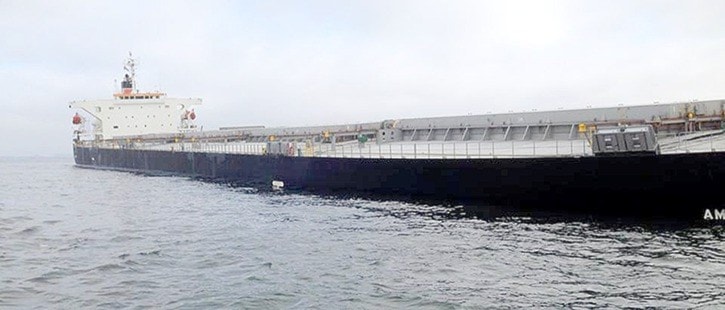Unfamiliarity with the route to an anchorage outside of Prince Rupert led to the grounding the Amakusa Island last year.
That was the finding of the Transportation Safety Board, which on Monday released its investigation report on the July 14 ship grounding. The charterer of the ship directed the master to anchor to address cargo issues prior to sailing to Japan and the Prince Rupert Port Authority directed the ship to anchorage 25. However, neither the ship's master or the pilot on board was familiar with the route to that anchorage, a route that went near a charted shoal that was too shallow for the vessel to pass.
The shoal was not detected by the bridge team while planning the route or monitoring the move and pilot's portable pilotage unit was not configured with all of the route planning and monitoring features to aid in detecting hazards.
As a result of the grounding, the Canadian Hydrographic Service has updated the chart used on the route. As well, the BC Coast Pilots Ltd reached an agreement with the Pacific Pilotage Authority to require pilots to undergo mandatory assessments at least every five years and provide improved programs to monitor pilots' familiarity with the areas they serve. The Amakusa Island managers have installed an electronic chart display and information system on board the vessel and have initiated additional crew training.
The 228-metre bulk carrier ran aground on July 14 while shifting from berth at Ridley Terminals to its assigned anchorage. The vessel, which has 80,000 metric tonnes of coal in its hold, suffered damage to its hull and began taking on water. To prevent more from entering, the Amakusa Island's water-tight bulkheads were closed.
